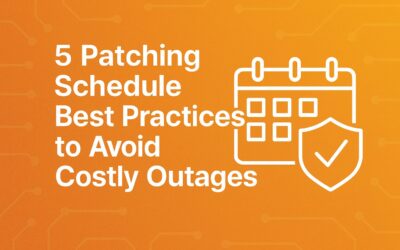Security teams don’t get to control when a breach happens—only how they respond to it. A solid incident response plan gives you that control. It defines the structure, processes, and responsibilities needed to act quickly, contain the damage, and recover with minimal disruption.
But not all plans are built to function under real pressure. Too many are written for compliance, not for execution. And while a great plan should do both, a functional plan should offer more than general guidance—it should give your team clear answers when speed matters most.
Here’s what your incident response plan should be able to answer—before anything breaks.
1. Who is on the incident response team, and what are their roles?
Incidents don’t wait for org charts to be clarified. Your plan should identify exactly who is part of the incident response (IR) team, what their responsibilities are, and who steps into key roles when something goes wrong. Who coordinates the response? Who communicates with executives, legal, external partners, or regulators? Without clear ownership, teams lose valuable time—and that time costs you.
2. How are incidents detected and validated?

Before you can respond, you need to know there’s something to respond to. That starts with clear criteria for what qualifies as an incident—misconfigurations, unauthorized access, ransomware, data exfiltration—and what doesn’t.
The incident response process must include mechanisms for threat detection: SIEM tools, EDR solutions, firewall logs, endpoint alerts. Just as important is how alerts are triaged. What systems are monitored? Who reviews the alerts? How are false positives handled? Your IR plan should make this explicit. Otherwise, teams are left guessing whether an anomaly is worth escalating.
3. What are the steps for containment?
When an incident is detected, the first minutes matter most. Your team must act immediately to contain the threat without compromising forensic evidence.
The initial response steps should be clearly outlined in your plan and should focus on:
- Isolating compromised systems from the network
- Disabling affected user accounts
- Blocking malicious outbound traffic
- Revoking exposed credentials or API keys
- Capturing volatile data (RAM, active sessions, etc.) before systems are powered down
It’s critical that first responders understand which actions are authorized and in what order—especially if escalation delays are expected. Your plan should address not only what actions to take, but also how to prioritize systems based on business impact and risk.
Without clear guidance, teams risk either moving too slowly—or worse, destroying valuable evidence that could support investigation and recovery later.
4. What is the communication protocol during an incident?

When a critical incident occurs, communication can either accelerate resolution or amplify chaos. A mature cybersecurity incident response plan will define:
- Who communicates with executive leadership, regulators, external partners, and customers
- What information is shared, and when
- How legal and regulatory disclosures are handled
- How teams maintain communication if primary channels (email, internal chat, phones) are compromised
Your plan should include out-of-band communication options such as secure messaging apps, pre-registered mobile numbers, or encrypted personal email accounts. These backup methods must be tested ahead of time—not invented in the middle of a crisis.
During an attack is the worst time to draft emails, rehearse statements, or figure out who speaks for the company. A tested communication protocol reduces confusion, accelerates decision-making, and maintains trust.
5. How do we investigate and analyze the incident?
Containment stops the immediate threat, but investigation reveals how it happened and how far it spread. Your incident response plan should define:
- How to preserve forensic evidence (system states, logs, memory dumps)
- How to reconstruct the attack timeline
- How to identify the root cause and method of entry
- How to determine if data was exfiltrated or altered
Investigations must move quickly without compromising evidence. Every action should be logged and validated where possible. A strong investigation lays the foundation for effective recovery and improved defenses.
6. How do we recover affected systems?
Recovery isn’t just about restoring systems—it’s about doing it securely and in the right order. You also need to verify that the attacker’s access has been fully removed, that backups are clean, and that forensic evidence has been collected.
Your incident response plan should define:
- How to prioritize systems based on business impact
- How to verify that backups are clean and uncompromised
- How to confirm attacker access has been fully removed before systems come back online
Critical systems that support business operations, customer services, or compliance requirements must be recovered first. Recovery efforts must also validate system integrity before restoring connectivity to avoid reinfection. A clear, prioritized recovery plan minimizes downtime, reduces risk, and speeds up full operational restoration.
7. What is your plan for reporting the incident?
Many industries have strict legal and regulatory requirements for incident reporting—and missing a deadline can trigger penalties.
Your incident response plan must clearly define:
- What incidents must be reported externally
- What information must be included in the report
- Who is responsible for preparing and submitting the reports
- The deadlines for notifying regulators, customers, or partners
The IR plan should also include templates or procedures for disclosures to speed up compliance under pressure. Clear reporting protocols reduce legal risk, protect reputations, and help meet mandatory obligations without last-minute scrambling.
8. What happens after the incident?
An incident isn’t truly over until the lessons learned are turned into concrete improvements. Your incident response plan should define a structured post-incident process, including:
- Conducting a formal post-incident report to document what happened, how it was handled, and what was impacted
- Updating policies, playbooks, and technical controls based on findings
- Identifying gaps in detection, containment, communication, or recovery
- Training the team on updated procedures to close vulnerabilities exposed by the incident
Post-incident work isn’t an optional exercise. It’s how you ensure that today’s breach doesn’t become tomorrow’s repeat event.
The faster your organization incorporates lessons learned, the stronger your security posture becomes.
An Incident Response Plan Isn’t Optional
An incident response plan that can’t answer these eight questions isn’t ready for production. It’s not enough to have a binder on a shelf or a PDF buried in SharePoint. The plan must be detailed, reviewed regularly, and tested against real scenarios.
Security failures are inevitable. Confusion doesn’t have to be. Build a plan that removes uncertainty and replaces it with precision.
Not sure if your plan would hold up in a real incident? Contact us to help you find the gaps before an attacker does.



